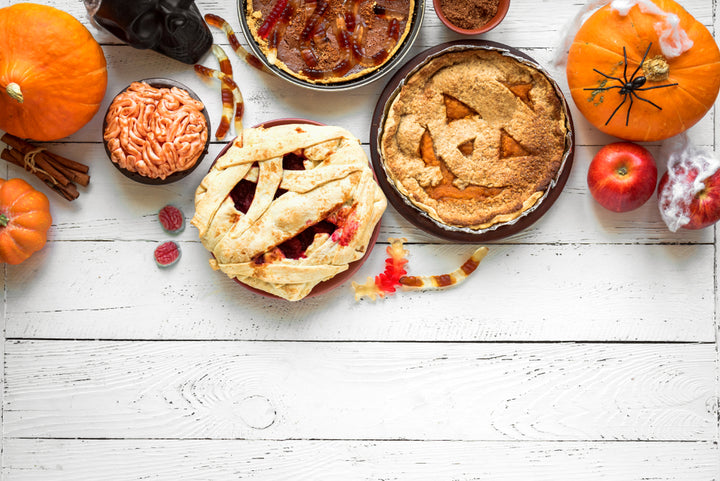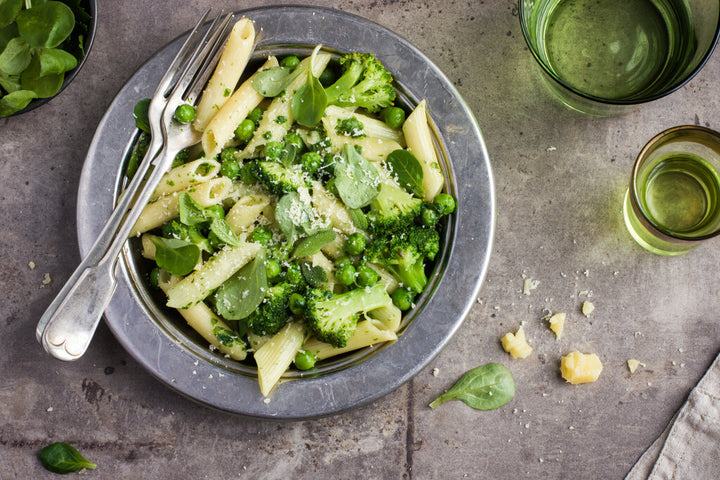Anchovies and spaghetti? That’s right; add a few olives, some capers, a can of tomatoes, and plenty of garlic, and you’ve got yourself pasta puttanesca, an unusual Italian dish that’s best described as strong in flavor.
Known for its curious origin story (pasta puttanesca was supposedly prepared by ladies of the night for their clients) and for the copious amounts of anchovies, this is a fishy dish that makes for a welcome change from a standard bolognese or carbonara.
Get your homemade pasta making because we’re going to show you how to prepare the best pasta puttanesca!
Pasta puttanesca recipe FAQ
It’s that easy! For this recipe, all you need to do is cook the pasta, prepare the pasta sauce, then mix everything together before serving. But in case you had any further questions, we’ve put together this short recipe FAQ to help you out in the kitchen.
What does pasta puttanesca mean?
Pasta puttanesca is a name that’s derived from Italian. We mentioned earlier that the origin story of this pasta dish is quite curious because it was supposedly ‘ladies of the night’ who served the dish up to their clients, given how it was both cheap, quick, and easy to make!
That’s where the name comes from, too, because ‘puttanesca’ in Italian translates (roughly and less crudely) to ‘lady of the night’ - literally, it probably has a much worse meaning that we won’t repeat here.
What does pasta puttanesca taste like?
There’s no trying to deny that pasta puttanesca has a strong, fishy, yet fiery taste. If you’re not the biggest fan of seafood flavors, then don’t try making this dish. Equally, if you’re not a big fan of heavy flavors, then this might not be for you.
If you are looking for something a little different, that’s both a little fruity and tomatoey, yet a little fishy, sour, and tangy, then this is a great dish to try making at home.
You can make this a lot spicier, too, if you enjoy fiery dishes. Add a little chili powder, chili oil, or a few fresh chili peppers along with the red pepper flakes.
What’s the best pasta for pasta puttanesca?
The best pasta for pasta puttanesca is long pasta. We’ve suggested spaghetti in the recipe, but there’s no reason why you can’t cook with fettuccine or even tagliatelle pasta. In a pinch, short pasta would do the job, as well.
The best pasta is fresh pasta, and if you’ve got time, you can add serious levels of homemade goodness to this dish by preparing pasta at home with a pasta maker. But, of course, we know this isn’t always possible, and store-bought fresh or dried pasta works great, too.
How can I reheat any leftovers?
Learning how to reheat pasta is a necessary skill that any budding pasta chef needs to learn. As you’ve stirred the sauce through with the pasta already, the best option in this scenario is going to be to reheat the leftovers on the stovetop.
Heat up a drizzle of oil in a large skillet, then add the leftovers and reheat on medium heat, stirring constantly. It should only take a few minutes, but be careful that the pasta doesn’t burn to the bottom of the skillet. You can add a little freshness to the reheated leftovers by sprinkling fresh basil or shredded parmesan over the pasta before serving.
Leftover pasta puttanesca will last for at least 48 hours, and possibly longer, in the fridge. Make sure it’s stored in a resealable container!
What can I serve with pasta puttanesca?
Pasta puttanesca is a fantastic dish that works really well for lunch or dinner. We highly recommend serving with freshly chopped basil, and of course, you can never forget the shredded parmesan to finish. Other herbs such as thyme, rosemary, parsley, or cilantro can add a lovely touch to the dish as well.
If one serving isn’t enough, or if you’re serving this as a side, then there are also plenty of great dishes that compliment pasta puttanesca. For starters, there’s not much that can beat a classic Italian-style garlic bread. Throw store-bought garlic bread in the oven if you’re in a rush, but better yet, slice up a fresh baguette, brush on garlic butter, then grill in the oven while melting mozzarella over the top. It’s delectable!
Fresh salads work wonderfully well, too, with pasta puttanesca. Mix up a quick, fresh salad of chopped tomatoes, cucumber, and onions (again, this is great if you’re in a rush), or take your time and prepare a caesar salad or an avocado and tomato salad.
Is pasta puttanesca vegan?
The recipe we’ve prepared above isn’t a vegan recipe because it contains anchovy paste and parmesan cheese (fish and dairy products). If you’re preparing fresh pasta or cooking with fresh pasta, it’s likely also to contain eggs.
However, it’s actually rather easy to turn pasta puttanesca into a vegan-friendly dish, even if it’s not traditionally a vegan meal. For starters, make sure you prepare pasta without any egg when you’re making homemade pasta, or if you’re buying pasta at the store, go for dried pasta, which is almost always egg-free.
Secondly, instead of using anchovy paste for the puttanesca sauce, opt for a fishy-flavored yet fish-free alternative. Try adding seaweed, more capers, or, best of all, Umeboshi paste, an umami flavored sauce that adds a strong fish-like flavor to dishes and results in a vegan puttanesca sauce!
Pasta puttanesca: a delightfully different dish!
With anchovies, capers, and olives in this Italian-inspired recipe, pasta puttanesca is guaranteed to leave a strong taste in your mouth. If you love hearty, home-cooked Italian-style food, though, then this is the dish for you.
Prepare your spaghetti, fettucini, or linguine, then load up the chili peppers, anchovies, and don’t forget the parmesan cheese to finish. It’s a delightfully different dish, so why not bookmark our recipe and give pasta puttanesca a try?
Enjoyed this recipe? We invite you to check out our recipes for fettuccine carbonara and spaghetti casserole!
Leave a comment
Comments will be approved before showing up.
Also in Recipes










